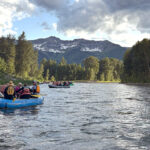Home »

Kootenai one of America’s most endangered rivers
The Kootenai (Kootenay) River is the ninth most endangered river in America thanks to selenium pollution originating from coal mining in the Elk Valley.

The Elk River carries the selenium into the Kootenay River, at Lake Koocanusa, which flows south into Montana and then west into Idaho, before curving north back into B.C. at Creston.
American Rivers’ 2013 America’s Most Endangered Rivers® report, released last week, states the transboundary Kootenai River’s water quality, native fish and wildlife and world-class recreation features are threatened by the five open-pit coal mines in the Elk Valley.
“American Rivers and its partners are calling on the U.S. State Department and the International Joint Commission to halt the coal mine expansions until an independent study is completed to determine the cumulative impacts of the mines on water quality, fish, and wildlife,” states an April 17 American Rivers press release.
“Runoff from the mines is causing alarming levels of selenium contamination in the Elk, which is revered by anglers for its native bull trout and westslope cutthroat trout fishery. Teck Resources Ltd., which owns the coalmines, is seeking to expand four of its five mines despite their ongoing environmental problems,” the release outlines.
“Our America’s Most Endangered Rivers report is a call to action to save rivers that face a critical decision point in the next year,” said Scott Bosse, American Rivers’ Northern Rockies Director in Bozeman, Mont. “The Kootenai is one of the most spectacular rivers in this part of the country, but it faces an uncertain future due to open-pit coal mining across the border in British Columbia. We hope this listing inspires citizens and elected leaders on both sides of the border to take swift and decisive action.”
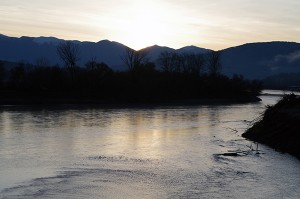 “As a fly fishing guide, the health of my business literally relies on the health of the Kootenai River,” said Tim Linehan, a fishing and hunting outfitter on the Kootenai River. “This is pretty simple. Rivers don’t stop flowing because of international borders. If we’re starting to see problems in the headwaters, in this case the Canadian side of the drainage, it’s critically important to take immediate action to prevent those problems from moving downstream as well.”
“As a fly fishing guide, the health of my business literally relies on the health of the Kootenai River,” said Tim Linehan, a fishing and hunting outfitter on the Kootenai River. “This is pretty simple. Rivers don’t stop flowing because of international borders. If we’re starting to see problems in the headwaters, in this case the Canadian side of the drainage, it’s critically important to take immediate action to prevent those problems from moving downstream as well.”

The Kootenai River, the second largest tributary of the Columbia River by volume, drains an 18,000 square mile watershed that spreads across Montana, Idaho, and British Columbia. The basin provides some of the highest quality water resources in America.
A new study conducted by researchers from the University of Montana confirmed that runoff from the mines has raised selenium levels in the Elk River to more than 10 times what has been observed in the nearby Flathead River, which is not affected by coal mining.
Selenium is a naturally occurring element that becomes toxic to fish and wildlife when it is released into the environment at unnaturally high levels.
“Selenium pollution in the Kootenai River is an escalating problem. The International Joint Commission successfully resolved the treatment of mountaintop removal coal mining in the neighboring Flathead River system. We think the IJC is the appropriate place to discuss and resolve selenium pollution originating in British Columbia,” said Dave Hadden, Director of Headwaters Montana.
“The waters of the Kootenai River flow constantly across the border from British Columbia to Montana, and unfortunately so do the mine pollutants. This is an international problem that will require an international solution, much like the IJC provided so successfully for the transboundary Flathead River system,” said Michael Jamison, Glacier Program Manager, National Parks Conservation Association. “What’s needed today is a moratorium on Canadian mine expansions until we can gather baseline data and establish a long-term mitigation plan. As downstream residents, we obviously have a very keen interest in what our upstream neighbors are sending our way.”
“For far too long the British Columbia and Canadian Governments have neglected to enforce water quality guidelines that are designed to protect the health of aquatic ecosystems like those of the Kootenay River,” said Ryland Nelson, Southern Rockies Program Manager for Wildsight. “The oversight of an impartial IJC referral is welcomed and encouraged by residents on both sides of the border.”
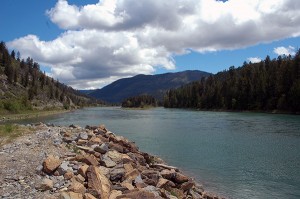
Kootenay East MLA Bill Bennett told e-KNOW April 3 that the provincial government is aware of the problem and is working with Teck to create a solution.
Two days before the American Rivers report was released, the Ministry of Environment issued an ‘Area Based Management Plan Order’ to Teck Resources Limited to provide clarity around watershed protection and mining activities in the Elk Valley.
Teck stated in an April 16 press release the company sees the order as “a positive step that will provide a regulatory basis to deal with impacts of mining on water quality in the Elk Valley, and will establish a regulatory context for permitting of future mining activity.”
Making the issue more complex is the importance of the Elk Valley coal mining industry – which produces .5% of Canada’s gross domestic product – Bennett said.
“Government is faced with ‘what do we do about this? We can’t allow selenium levels to continue to increase but on the other hand you’ve got 4,000 direct jobs, several thousand indirect jobs; the jobs in the industry average $110,000/$120,000 a year. It would absolutely cripple the economy of the East Kootenay. Even my constituents here in Cranbrook have no idea how lucky we are, from a socio-economic point of view, to have them (Teck),” he told e-KNOW.
The top 10 most endangered rivers in America are:
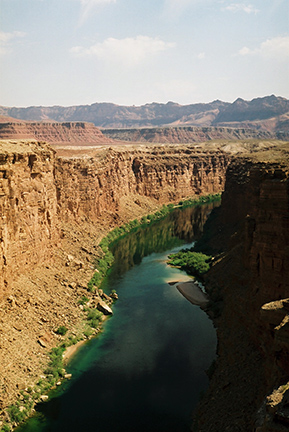
1) Colorado River
2) Flint River (Georgia)
3) San Saba River (Texas)
4) Little Plover River (Wisconsin)
5) Catawba River (North and South Carolina)
6) Boundary Waters (Minnesota)
7) Black Warrior River (Alabama)
8) Rough & Ready and Baldface Creeks (Oregon)
9) Kootenai River
10) Niobrara River (Nebraska, South Dakota, Wyoming)
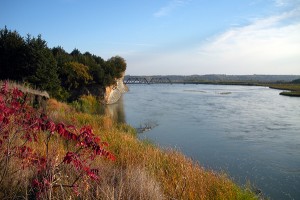
Founded in 1973 and headquartered in Washington, DC, American Rivers is the leading conservation group working to protect and restore the nation’s rivers. This year marks the 28th consecutive year it has highlighted threats to the nation’s rivers through the release of its report.
Visit www.americanrivers.org for more.
Ian Cobb/e-KNOW



